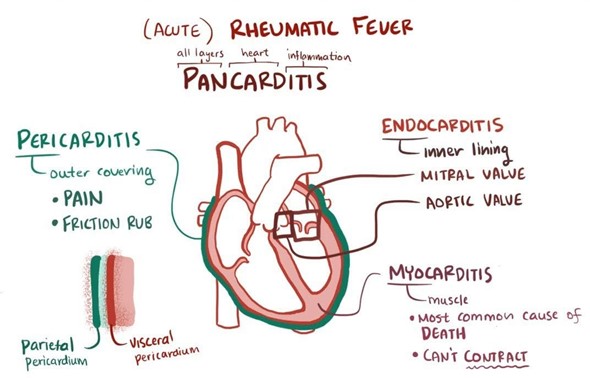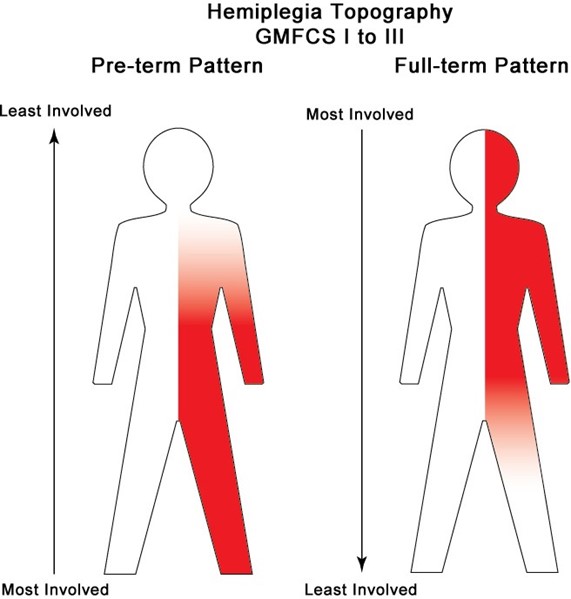A nurse is caring for an 8-year-old child who has acute rheumatic fever. Which of the following assessments is the nurse's priority immediately after admission?
Using a pain-rating tool to determine the severity of the joint pain
Assessing the client's erythematous rash
Identifying the degree of parental anxiety related to the diagnosis
Auscultating the rate and regularity of the child's heart sounds and notifying the provider immediately of abnormalities
The Correct Answer is D
Choice A: Using a pain-rating tool to determine the severity of the joint pain is not the priority assessment for an 8-year-old child who has acute rheumatic fever, which is an inflammatory condition that can affect various organs, especially the heart, joints, skin, and brain. Joint pain is one of the major criteria for diagnosing acute rheumatic fever and can affect one or more large joints, such as knees, ankles, elbows, or wrists. Joint pain can be managed with analgesics or anti-inflammatory drugs.
Choice B: Assessing the client's erythematous rash is not the priority assessment for an 8-year-old child who has acute rheumatic fever, which is an inflammatory condition that can affect various organs, especially the heart, joints, skin, and brain. The erythematous rash is one of the minor criteria for diagnosing acute rheumatic fever and can appear as pink or red patches on the trunk or limbs. The erythematous rash can fade or change location over time and does not require any specific treatment.
Choice C: Identifying the degree of parental anxiety related to the diagnosis is not the priority assessment for an 8-year-old child who has acute rheumatic fever, which is an inflammatory condition that can affect various organs, especially the heart, joints, skin, and brain. Parental anxiety related to the diagnosis can affect their coping skills and ability to care for their child. Parental anxiety can be addressed by providing education, support, and referral to appropriate resources.
Choice D: Auscultating the rate and regularity of the child's heart sounds and notifying the provider immediately of abnormalities is the priority assessment for an 8-year-old child who has acute rheumatic fever, as it can indicate cardiac involvement, which is the most serious complication of acute rheumatic fever. Cardiac involvement can cause damage to the heart valves, myocardium, or pericardium and lead to heart failure or death. Abnormalities in heart sounds may include murmurs, rubs, gallops, or arrhythmias.

Nursing Test Bank
Naxlex Comprehensive Predictor Exams
Related Questions
Correct Answer is C
Explanation
Choice A: Improving the client's school attendance skills is not the priority goal for a child who has hemiplegic cerebral palsy, which is a condition that affects one side of the body and causes muscle weakness, spasticity, and impaired coordination. Improving the client's school attendance skills is a long-term goal that requires collaboration with the school staff, the child, and the parents. The priority goal for a child who has hemiplegic cerebral palsy is to ensure their safety and mobility at home.
Choice B: Providing teaching on self-care activities is not the priority goal for a child who has hemiplegic cerebral palsy, which is a condition that affects one side of the body and causes muscle weakness, spasticity, and impaired coordination. Providing teaching on self-care activities is an important goal that requires assessment of the child's abilities, needs, and preferences. The priority goal for a child who has hemiplegic cerebral palsy is to ensure their safety and mobility at home.
Choice C: Modifying the environment for optimal safety and mobility is the priority goal for a child who has hemiplegic cerebral palsy, which is a condition that affects one side of the body and causes muscle weakness, spasticity, and impaired coordination. Modifying the environment for optimal safety and mobility can prevent falls, injuries, or complications and promote independence and function. The nurse should include interventions such as removing clutter, securing rugs, installing grab bars, providing adaptive equipment, and arranging furniture.
Choice D: Providing counseling services for the parents is not the priority goal for a child who has hemiplegic cerebral palsy, which is a condition that affects one side of the body and causes muscle weakness, spasticity, and impaired coordination. Providing counseling services for the parents is a supportive goal that requires referral to appropriate resources, such as social workers, psychologists, or support groups. The priority goal for a child who has hemiplegic cerebral palsy is to ensure their safety and mobility at home.

Correct Answer is ["260"]
Explanation
Sure, let’s calculate the total fluid intake step by step.
Step 1: Convert ½ cup of juice to mL.
- 1 cup = 240 mL
- ½ cup = 240 mL ÷ 2 = 120 mL
- Result: 120 mL
Step 2: Convert 3 oz of gelatin to mL.
- 1 oz = 30 mL
- 3 oz = 3 × 30 mL = 90 mL
- Result: 90 mL
Step 3: Convert 1 oz of an ice pop to mL.
- 1 oz = 30 mL
- 1 oz = 30 mL
- Result: 30 mL
Step 4: Ginger ale is already in mL.
- Result: 20 mL
Step 5: Add all the mL values together.
- 120 mL (juice) + 90 mL (gelatin) + 30 mL (ice pop) + 20 mL (ginger ale) = 260 mL
- Result: 260 mL
The nurse should record the child’s fluid intake as 260 mL.
Whether you are a student looking to ace your exams or a practicing nurse seeking to enhance your expertise , our nursing education contents will empower you with the confidence and competence to make a difference in the lives of patients and become a respected leader in the healthcare field.
Visit Naxlex, invest in your future and unlock endless possibilities with our unparalleled nursing education contents today
Report Wrong Answer on the Current Question
Do you disagree with the answer? If yes, what is your expected answer? Explain.
Kindly be descriptive with the issue you are facing.
